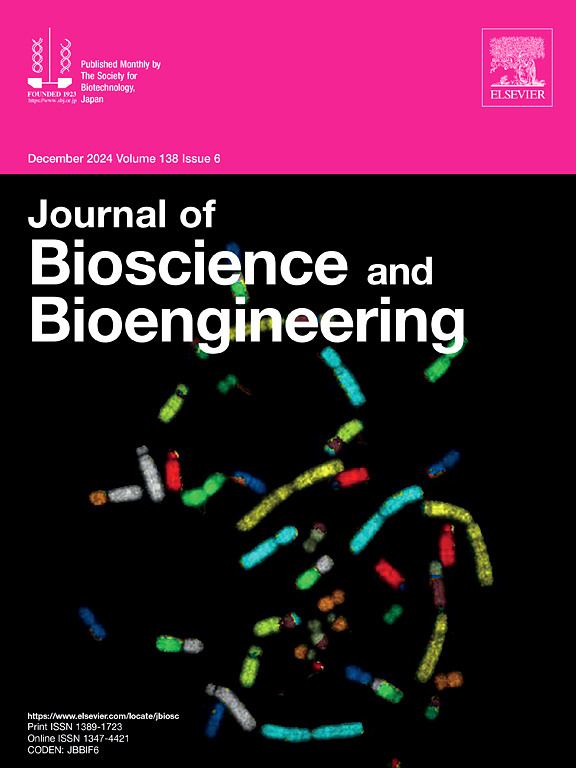Monitoring and optimization of the microenvironment in a gravity-driven microfluidic system placed on a slow-tilting table
IF 2.9
4区 生物学
Q3 BIOTECHNOLOGY & APPLIED MICROBIOLOGY
引用次数: 0
Abstract
Gravity-driven microfluidic chips offer portability and flexibility in different settings because pumps and connecting tubes are unnecessary for driving fluid flow. In a previous study, human induced pluripotent stem cells were cultured using gravity-driven microfluidics, with the liquid flow rate regulated by a tilting table. However, instability in cell culture has been observed, occasionally leading to cell death owing to unknown causes. This study measured the ability of a gravity-driven microfluidic system to maintain essential microenvironments, specifically the flow rate, CO2 levels, temperature, and humidity. The incubation procedure was improved to stabilize the parameters at target values. Improvements in the incubation process reduced the time required to reach the stabilized value for CO2, temperature, and humidity by 85, 67, and 5 %, respectively, compared to previous methods. The system demonstrated a precise flow rate, confirmed by a consistent increase in the downstream tank's medium volume after 4 h of perfusion. In addition, the adjustment of the tilting table maintained a steady angle and effectively regulated the flow rate, with the measured flow rate consistent with the theoretical value. The gravity-driven microfluidic system effectively facilitated the culture and differentiation of human iPSCs into the mesodermal lineage after bone morphogenetic protein 4 induction, as indicated by positive SSEA1 immunostaining, demonstrating its potential for stem cell research. Gravity-driven microfluidic systems satisfy these requirements and are suitable for stem cell culture experiments.
重力驱动微流控系统微环境的监测与优化。
重力驱动的微流控芯片提供便携性和灵活性,在不同的设置,因为泵和连接管驱动流体流动是不必要的。在先前的一项研究中,利用重力驱动的微流体培养人类诱导多能干细胞,液体流速由倾斜台调节。然而,已经观察到细胞培养中的不稳定性,偶尔会由于未知原因导致细胞死亡。本研究测量了重力驱动的微流体系统维持基本微环境的能力,特别是流速、二氧化碳水平、温度和湿度。改进了培养程序,使参数稳定在目标值上。与以前的方法相比,培养过程的改进使达到二氧化碳、温度和湿度稳定值所需的时间分别减少了85%、67%和5%。该系统显示出精确的流量,在灌注4小时后,下游水箱的介质体积持续增加,证实了这一点。此外,倾斜台的调整保持了稳定的角度,有效调节了流量,实测流量与理论值一致。SSEA1免疫染色阳性表明,重力驱动的微流控系统有效地促进了骨形态发生蛋白4诱导后人多能干细胞向中胚层谱系的培养和分化,显示了其在干细胞研究中的潜力。重力驱动微流体系统满足这些要求,适合干细胞培养实验。
本文章由计算机程序翻译,如有差异,请以英文原文为准。
求助全文
约1分钟内获得全文
求助全文
来源期刊

Journal of bioscience and bioengineering
生物-生物工程与应用微生物
CiteScore
5.90
自引率
3.60%
发文量
144
审稿时长
51 days
期刊介绍:
The Journal of Bioscience and Bioengineering is a research journal publishing original full-length research papers, reviews, and Letters to the Editor. The Journal is devoted to the advancement and dissemination of knowledge concerning fermentation technology, biochemical engineering, food technology and microbiology.
 求助内容:
求助内容: 应助结果提醒方式:
应助结果提醒方式:


